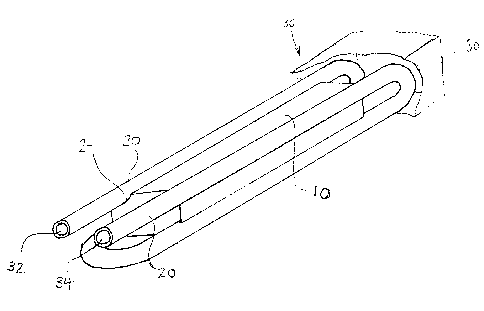Une partie des informations de ce site Web a été fournie par des sources externes. Le gouvernement du Canada n'assume aucune responsabilité concernant la précision, l'actualité ou la fiabilité des informations fournies par les sources externes. Les utilisateurs qui désirent employer cette information devraient consulter directement la source des informations. Le contenu fourni par les sources externes n'est pas assujetti aux exigences sur les langues officielles, la protection des renseignements personnels et l'accessibilité.
L'apparition de différences dans le texte et l'image des Revendications et de l'Abrégé dépend du moment auquel le document est publié. Les textes des Revendications et de l'Abrégé sont affichés :
| (12) Demande de brevet: | (11) CA 2354335 |
|---|---|
| (54) Titre français: | REGULATEUR DE TEMPERATURE DE CARBURANT |
| (54) Titre anglais: | FUEL TEMPERATURE CONTROLLER |
| Statut: | Réputée abandonnée et au-delà du délai pour le rétablissement - en attente de la réponse à l’avis de communication rejetée |
| (51) Classification internationale des brevets (CIB): |
|
|---|---|
| (72) Inventeurs : |
|
| (73) Titulaires : |
|
| (71) Demandeurs : |
|
| (74) Agent: | NEXUS LAW GROUP LLP |
| (74) Co-agent: | |
| (45) Délivré: | |
| (22) Date de dépôt: | 2001-07-30 |
| (41) Mise à la disponibilité du public: | 2003-01-30 |
| Requête d'examen: | 2006-07-31 |
| Licence disponible: | S.O. |
| Cédé au domaine public: | S.O. |
| (25) Langue des documents déposés: | Anglais |
| Traité de coopération en matière de brevets (PCT): | Non |
|---|
| (30) Données de priorité de la demande: | S.O. |
|---|
The invention disclosed provides a heat exchanger
apparatus for heating a fuel, which comprises a heat
exchanger block made of a heat conductive material. The
heat exchanger block contains a passageway in which is
located a heating element operative to heat the heat
exchanger block. A fuel conduit in contact with the surface
of the heat exchanger block conducts heat from the block to
the fuel flowing within. The heat exchanger block is shaped
in order to maximize the surface area in contact with the
fuel conduit.
Note : Les revendications sont présentées dans la langue officielle dans laquelle elles ont été soumises.
Note : Les descriptions sont présentées dans la langue officielle dans laquelle elles ont été soumises.

2024-08-01 : Dans le cadre de la transition vers les Brevets de nouvelle génération (BNG), la base de données sur les brevets canadiens (BDBC) contient désormais un Historique d'événement plus détaillé, qui reproduit le Journal des événements de notre nouvelle solution interne.
Veuillez noter que les événements débutant par « Inactive : » se réfèrent à des événements qui ne sont plus utilisés dans notre nouvelle solution interne.
Pour une meilleure compréhension de l'état de la demande ou brevet qui figure sur cette page, la rubrique Mise en garde , et les descriptions de Brevet , Historique d'événement , Taxes périodiques et Historique des paiements devraient être consultées.
| Description | Date |
|---|---|
| Inactive : Regroupement d'agents | 2011-07-07 |
| Lettre envoyée | 2006-09-15 |
| Demande non rétablie avant l'échéance | 2006-07-31 |
| Le délai pour l'annulation est expiré | 2006-07-31 |
| Toutes les exigences pour l'examen - jugée conforme | 2006-07-31 |
| Requête d'examen reçue | 2006-07-31 |
| Exigences pour une requête d'examen - jugée conforme | 2006-07-31 |
| Inactive : CIB de MCD | 2006-03-12 |
| Réputée abandonnée - omission de répondre à un avis sur les taxes pour le maintien en état | 2005-08-01 |
| Demande publiée (accessible au public) | 2003-01-30 |
| Inactive : Page couverture publiée | 2003-01-29 |
| Inactive : Correspondance - Formalités | 2002-07-15 |
| Inactive : CIB en 1re position | 2001-09-19 |
| Inactive : Certificat de dépôt - Sans RE (Anglais) | 2001-08-23 |
| Exigences de dépôt - jugé conforme | 2001-08-23 |
| Lettre envoyée | 2001-08-23 |
| Demande reçue - nationale ordinaire | 2001-08-23 |
| Date d'abandonnement | Raison | Date de rétablissement |
|---|---|---|
| 2005-08-01 |
Le dernier paiement a été reçu le 2006-07-31
Avis : Si le paiement en totalité n'a pas été reçu au plus tard à la date indiquée, une taxe supplémentaire peut être imposée, soit une des taxes suivantes :
Veuillez vous référer à la page web des taxes sur les brevets de l'OPIC pour voir tous les montants actuels des taxes.
| Type de taxes | Anniversaire | Échéance | Date payée |
|---|---|---|---|
| Taxe pour le dépôt - petite | 2001-07-30 | ||
| Enregistrement d'un document | 2001-07-30 | ||
| TM (demande, 2e anniv.) - petite | 02 | 2003-07-30 | 2003-07-30 |
| TM (demande, 3e anniv.) - petite | 03 | 2004-07-30 | 2004-07-30 |
| Requête d'examen - petite | 2006-07-31 | ||
| TM (demande, 5e anniv.) - petite | 05 | 2006-07-31 | 2006-07-31 |
Les titulaires actuels et antérieures au dossier sont affichés en ordre alphabétique.
| Titulaires actuels au dossier |
|---|
| AIRCARE INTERNATIONAL, INC. |
| Titulaires antérieures au dossier |
|---|
| VICTOR J. DIDUCK |